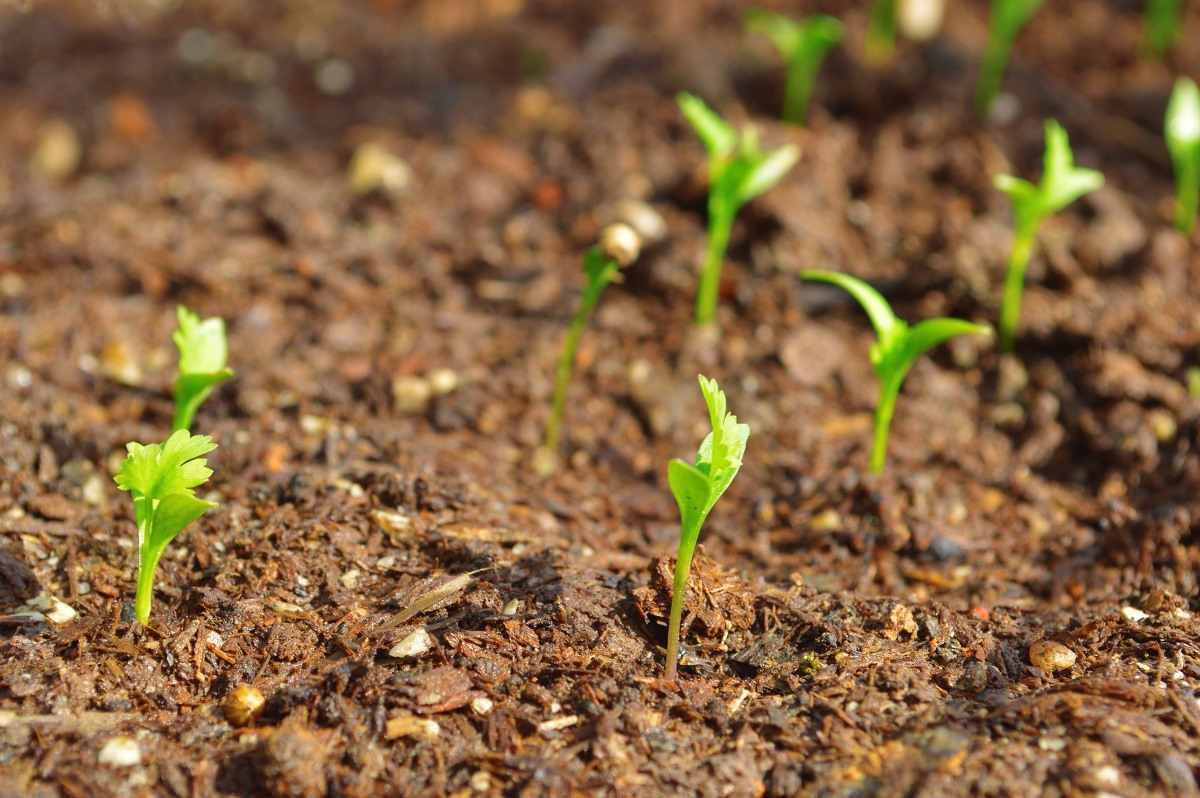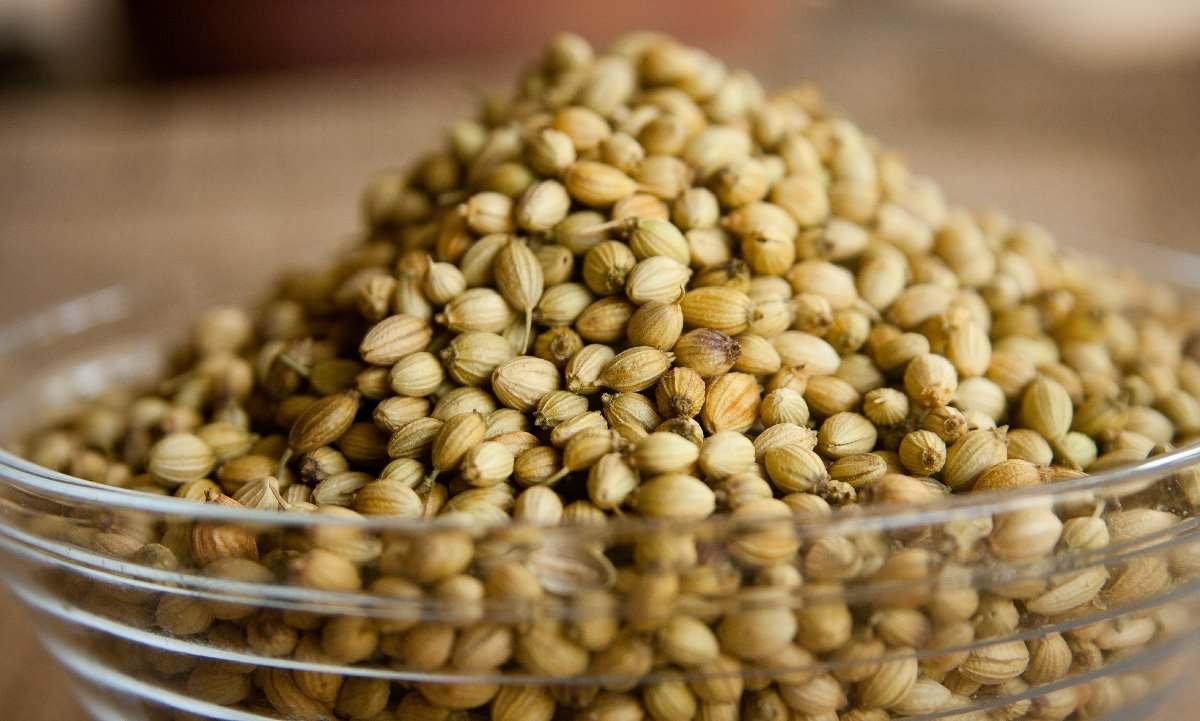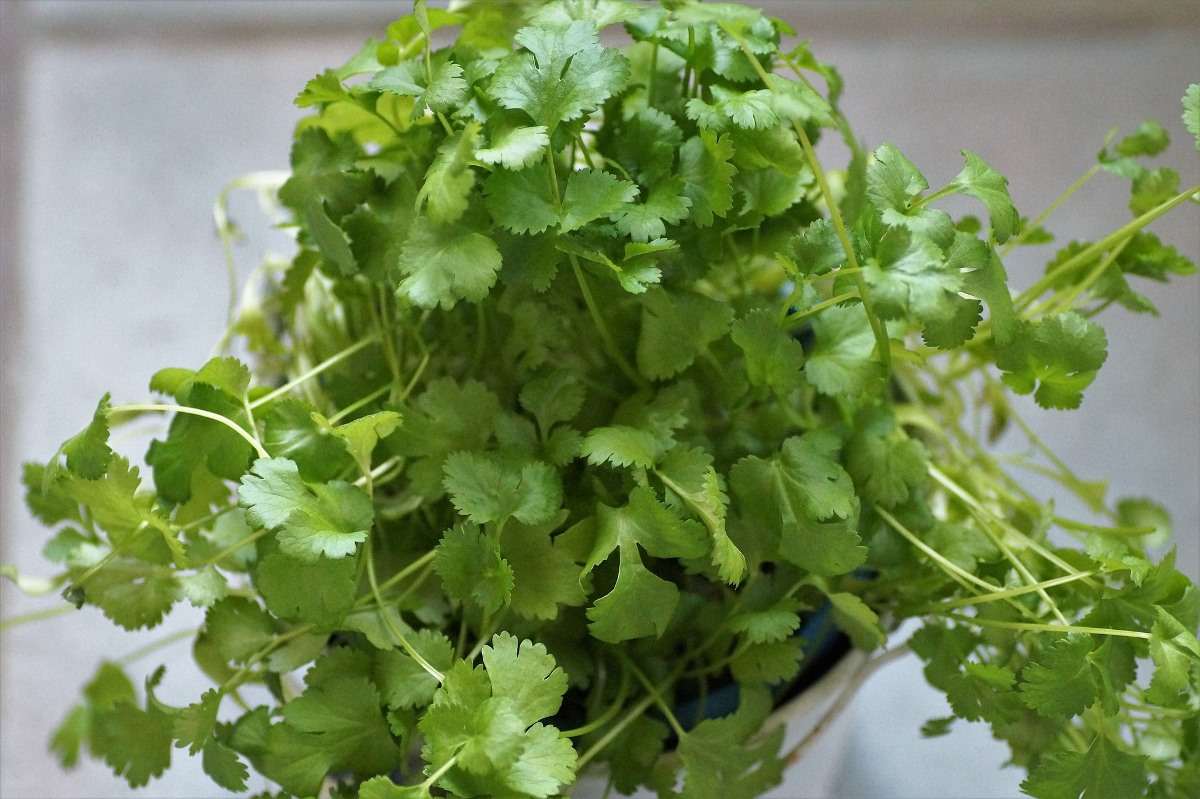Growin Coriander from Seeds (Cilantro) At Home
Hello gardeners, today we are here with a new article. Do you want to grow coriander plants from seeds at home? Well, in this article we are going to discuss how to grow coriander from seeds at home. We are even going to cover all the following topics regarding how to grow coriander from seeds. They are listed below:
- Introduction to growing coriander from seeds at home
- Soil requirement for growing coriander from seeds at home
- Suitable container for growing coriander from Seeds at home
- Sunlight requirement for growing coriander from Seeds at home
- Growing coriander from seeds at home
- Tips for germinating coriander seeds at home
- How to plant coriander at home?
- Water requirement for growing coriander from seeds at home
- Required temperature and humidity for growing coriander from seeds at home
- Planting procedure for growing coriander from seeds at home
- How to care for a coriander plant at home?
- Fertilizing your coriander at home
- Common coriander pests and diseases
- Harvest procedure of coriander
Introduction to Growing Coriander from Seeds At Home
Coriander is an annual herb. It belongs to the Apiaceae family. It is also called Chinese parsley or cilantro. All the parts of the plant are highly edible, but the fresh leaves are used in cooking and the dried seeds are used as spices. Both parts are most commonly used in cooking. They can be easily grown at home.
A Step By Step Guide for Growing Coriander from Seeds At Home
Coriander is the fastest-growing annual herb. It is also a soft plant growing to 50 cm or 20 inches tall. The leaves of coriander are in variable shape and at the base of the plant, they are broadly lobed, and feathery higher on the flowering stems. The flowers are in the shape of small umbels, they are white or very pale pink, asymmetrical, and the petals are pointing away from the centre.
Soil Requirement for Growing Coriander from Seeds At Home
Soil is the most important thing for growing Coriander plants and for that; it is important to choose or select the best soil to grow your Coriander plant. Coriander will always do very well in loamy soil and well-drained soil. The pH value should be between 6.5 and 7.0. The soil has to be neutral in pH level and it should be rich in organic matter and most particularly aged manure or compost. They provide a steady supply of nitrogen among other elements and in this way you can promote vegetative growth. The soil should be loamy in texture as it is very important to plant growth and development.
- Broccoli Seed Germination and Selection
- Asparagus Seed Germination and Variety Selection
- Seasonal Flower Gardening: Best Practices for Spring, Summer, Fall, and Winter
- How to Grow Hibiscus from Flower
- Plantation Ideas for Home Decoration: A Beginners Guide
- Flower Garden Designs and Layouts for Beginners
- Planting and Spacing Techniques in Papaya: A Beginner’s Guide
- Growing Gold: Essential Techniques for Planting Pineapples
- How to Make Kalanchoe Plant Bushy: Home Remedies and Solutions

Suitable Container for Growing Coriander from Seeds At Home
The biggest mistake that few people do when growing coriander is they choose the wrong container. You need to have a careful and creative decision when choosing your container for coriander.
You can use any type of container to grow coriander but have an idea that the selected container should hold the soil as well as it should drain properly without getting soil soggy.
If the selected container doesn’t have enough drainage holes, make sure to drill sizable drainage holes.
When selecting or choosing a container to plant your coriander, you must consider its growth. As mentioned earlier in the text above, coriander has deep roots, and for that reason, you must choose a container that will support the growth of the coriander. You need to choose a container with a minimum bottom of 5 inches as long as it will allow proper drainage of water for the plant. In small containers, the soil is not able to hold enough moisture then the plant can quickly become root bound, thus this causes your coriander to wilt becoming unproductive.
On the other hand, if you have a large container, this might also be a problem for your coriander because it will spend much of its energy on root development and less energy on growth and become unproductive.
Generally, planters, containers, and pots are normally available in different sizes, materials as well shapes; therefore, whatever kind of container you have decided to use for your coriander, you must consider the size and you must consider how well it can facilitate drainage. Here are some varieties of container listed below you can choose:
- Terra-Cotta Pots
These terra-cotta pots are available in a variety of shapes and sizes.
They are made up of porous clay soil which is rich in iron. They are designed in such a way that plants can breathe; thus, keeping the soil in the pot cool and over moisture, and even keeping the plant healthy. This terra-cotta pot may be a perfect choice for your coriander, the fact that coriander prefers a cool and moisturized environment which this pot gives. The main problem with this terra-cotta pot is the idea that it’s relatively different and it can break easily.
Another problem is the terra-cotta pot can dry out and most especially in sunny locations or areas, tends to lose moisture from the outside. However, this problem of losing moisture from outside can be solved by lining the gaze from the interior side of the pot to limit the amount of moisture escaping from the pot.
- Plastic Containers
These plastic containers can also be used to plant and grow your coriander. Some advantages that come along with plastic containers are lightweight, strength, and flexibility. Plastic pots or containers are excellent choices for moisture-loving plants such as coriander. These plastic pots or containers can hold water for a long time without losing moisture to the outside.
You need to avoid using black or even dark-color plastic pots if your location or area is very sunny as they tend to absorb heat and get very hot, thus this can damage the tender roots of the plant. Choosing light-color containers can reflect the heat and keep the roots cool.
Another limitation or drawback of plastic pots is that they are not durable and they will have a very short lifespan or a lifetime.
- Wooden Containers
These wooden containers will be practical and they are natural containers for planting as well as growing coriander and for an overall gardening practice. Wooden containers look great and they are best, relatively lightweight and they even retain water very well.
Wooden containers are durable and don’t tend to crack during cold weather and they are very slow to dry out which are the perfect growing containers for coriander given its moisturized nature. Wooden containers tend to rot after some time is the only disadvantage that comes along with wooden containers, this can be solved by lining the gaze to the interior side of the pot that limits the amount of water been absorbed by the pot.
- Metal Containers
One of the outstanding features about metal pots or containers is that they are completely durable and metals like aluminium and iron can offer your plant the durability of the pot and some of them have been lightweight thus making it possible for the plant potable move the container. Some of these metal containers or pots are designed to grow plants as they come with drainage holes that facilitate the growth of the plant. Therefore, you can even choose metal containers to plant and grow your coriander.
- Concrete Containers
The great thing about this concrete container is its durability as they last for a long time.
They are designed in such a way that they can allow the planting and growing of plants. But they are expensive and are highly preferred for large plants. They are even difficult to move around.
For this reason, when you are choosing pots or containers to grow your coriander, it is clear to choose the wooden, plastic, and terra-cotta containers will be a perfect choice for coriander.
Sunlight Requirement for Growing Coriander from Seeds At Home
Corianders do very well in the presence of fair levels of sunlight.
The coriander plant is extremely sensitive to extreme sunlight. You should place your pot at a location where it will only receive the sunlight indirectly. In case you lack a location where you can place your pot to receive sunlight indirectly, you can erect a shelter above the pots to prevent direct sunlight and to provide indirect sunlight. It is also important to notice that the shelters can also prevent the occurrence of soil erosion, which is a result of rain droplets.
Growing Coriander from Seeds At Home
Coriander seed contains two seeds in it. Each of them will grow into a separate coriander plant. It can be sown whole directly or you can split and sow them. When you split them, it increases the germination rate since it scarifies the seeds. So, how to grow from a whole coriander seed to a split one? The way is to do is, take a slipper in your hands; that’s right! Spread the seeds on the floor and keep the slipper on the seeds and gently move the slipper by pressing the seeds. This is not the place to show your strength because remember that we are not making coriander powder so be very gentle. In this way, you need to sow the seeds of coriander.
Germination for Growing Coriander from Seeds At Home

Always you need to buy seeds from sources that are trustworthy when growing coriander
Buy coriander seeds that are only meant for sowing purposes. Use coriander seeds that are usually dried or dehydrated to stop them from getting spoiled over time. Use fresh coriander seeds for germinating. Coriander seeds especially are prone to affect by small bugs that dwell inside the seed. They will eat away the form that is inside and make it non-viable.
How to Plant Coriander At Home?
Coriander is directly sown. The planting and sowing of the coriander seeds happen at the same time. Growing in containers is best because you can move the container around to get good lighting.
Take a tray with a potting mix that is filled up to half-inch from the top. Then make rows by drawing a line with your fingers or with a stick. Simply sow the split coriander seeds in that row and after that, you need to cover the seeds with coco peat or with any compost. Water them properly and be patient! There are two ways in which sowing them is thick and thin. If you are sowing it in a small container, then sow them thinly. If you are sowing it on the ground or a bigger container, you can sow them thickly. Coriander seeds are quite very fast in germinating. Coriander seeds start germinating between 5-7 days after sowing.
Water Requirement for Growing Coriander from Seeds At Home
Water is also very important for the growth of coriander at home. The coriander plant likes very moist soil, and with this point, good drainage is also very important given the fact that coriander has deep roots. Make sure that the soil is regularly wet and not soaked as the stem of the plant it is also important to susceptible to a lot of water, and for that, it can easily break. Also, the frequency of watering coriander can ultimately depend on the soil moisture content.
Required Temperature and Humidity for Growing Coriander from Seeds At Home
Coriander is a cool-season plant, and that perform best at temperatures of between 10 to 27°C. The plant can also tolerate temperatures of below 10°C. Coriander plants may start bolting once temperatures exceed and it cannot tolerate temperatures exceeding 30°C, once your coriander bolts, it loses the flavour it.
Planting Procedure for Growing Coriander from Seeds At Home
Step 1) Prepare the seeds for sowing – Before planting the seeds, you need to prepare the seeds to increase their chances of germinating rate. To prepare them as mentioned above you need to crush them.
Step 2) Fill the pot with suitable soil – After the seeds are ready, fill your pot with suitable soil that is loam soil mixed with manure.
Step 3) Plant the seeds in the pot – After the soil is been ready, you need to sow the seeds in rows which is highly recommended that is for easy harvesting.
How to Care For a Coriander Plants At Home?

Weeding
Weeding is also the part of caring for your plant as it stops the growth of the plant. Weeds are very competitive plants that grow around and reduce the useful crop yield by acquiring space, nutrients, and fertilizers from the soil, which are very necessary for the growth of coriander. To reduce this you need to weed or need to eliminate the competitive plants.
Fertilizing Your Coriander At Home
Fertilizing your plants helps to boost the yields and helps to fight pests and diseases. Fertilizing coriander plants can be done by using a balanced and water-soluble fertilizer. After preparing to fertilize your coriander follow the instructions on the package. As the flowers start to appear, and plants begin to set seed, then you need to stop applying fertilizer.
In case if you miss this: Growing Organic Spinach At Home.
Common Coriander Pests and Diseases and Control Procedure
Diseases, symptoms, and management are listed below:
- Powdery mildew
This is a common disease that appears as small, white, and powdery patches on parts of the coriander.
To get rid of this disease, avoid excess fertilizers, apply fungicides. Use the sulfur application to control this disease.
- Bacterial leaf spot
This disease appears as small water-soaked spots on the plant.
Watering at regular intervals can reduce this disease.
- Soft Rot
Symptoms include small water-soaked lesions at the base of the petioles
Fertilizing at the required quantity helps to reduce this disease.
- Damping-off
This disease can be caused by fungal infections.
Use a healthy seed for sowing.
Pests, symptoms, and management are listed below:
- Aphids
Aphids are the small soft-bodied insects on the leaves and stems of the plant that is usually green or yellow.
You can manage the insects by mulching at the appropriate time.
- Armyworms
You can observe small circular and irregular round holes on the plant.
They can be managed by using organic fertilizers or pesticides.
- Root-knot nematode
You can able to observe small dark spots on the plant.
These pests can be managed by using suitable soil.
How to Harvest Coriander At Home?
Coriander can be harvested in about 3-4 weeks from the time of planting.
It is mainly advised that you harvest your coriander either in the morning or in the evening.
You can harvest coriander by, smoothly cutting the mature stems from the base.
You need to also avoid harvesting about three-quarters of the plant if the plant is week.
Harvesting the seeds is often done by clipping the seeds heads and putting them in the way up within the sack. Provides it a few days for the husks to dry, split, and release the seeds inside. So if you would like to grow coriander then let me warn you! This plant will need quite some attention and care to grow healthy and yield an honest harvest. It’s easy to try to but it’ll take some time.